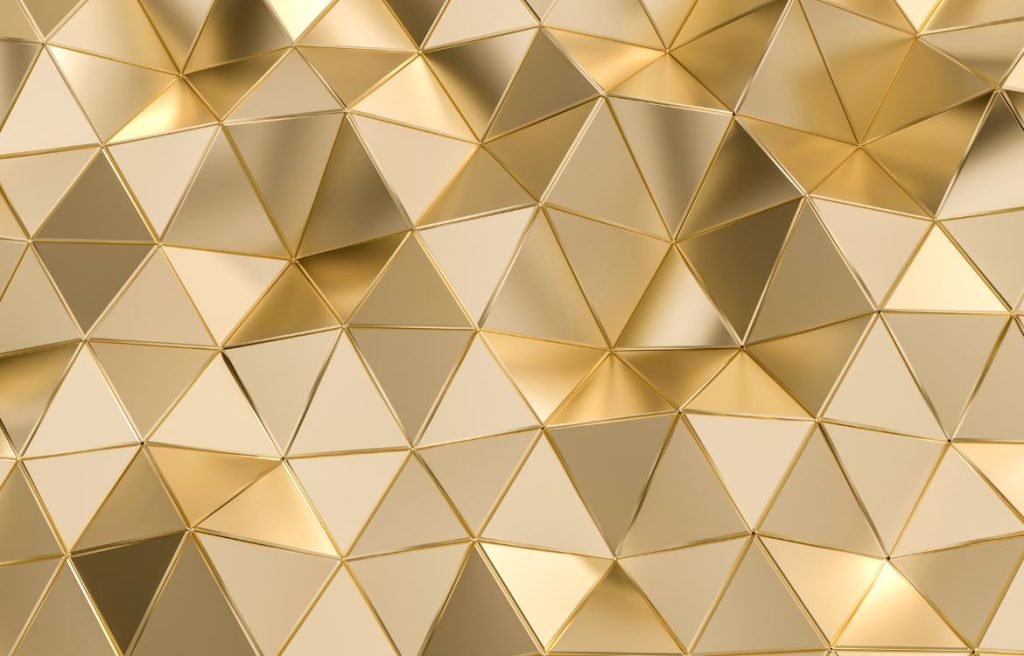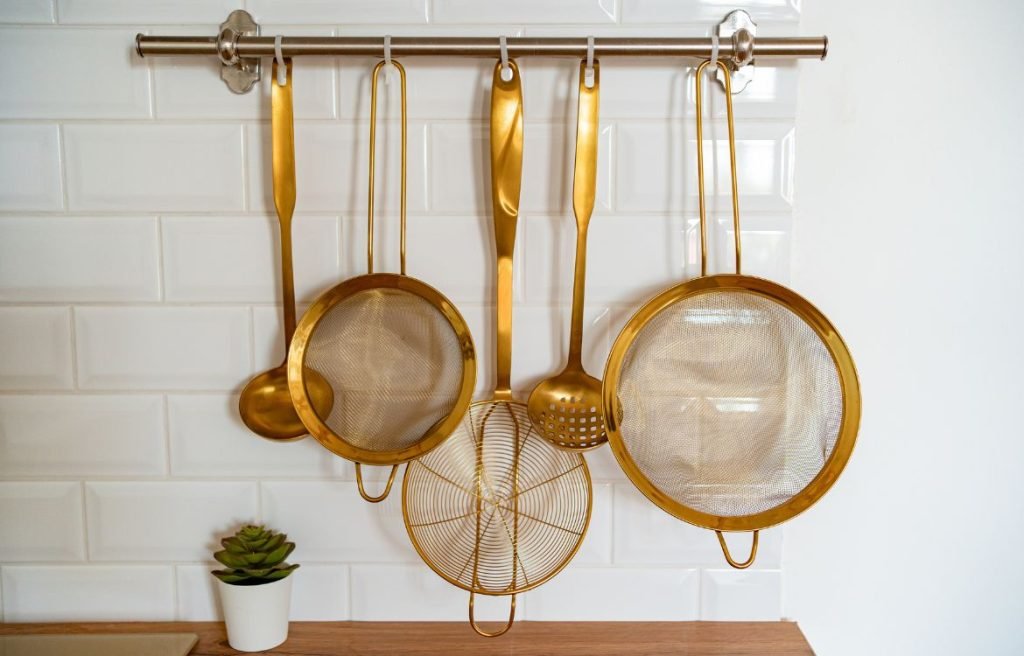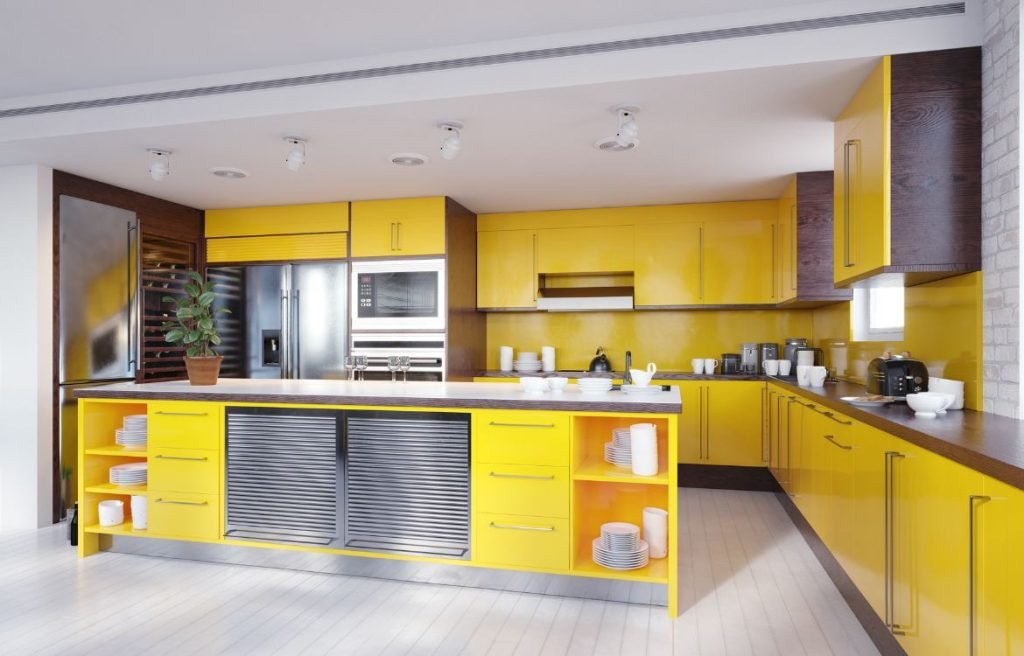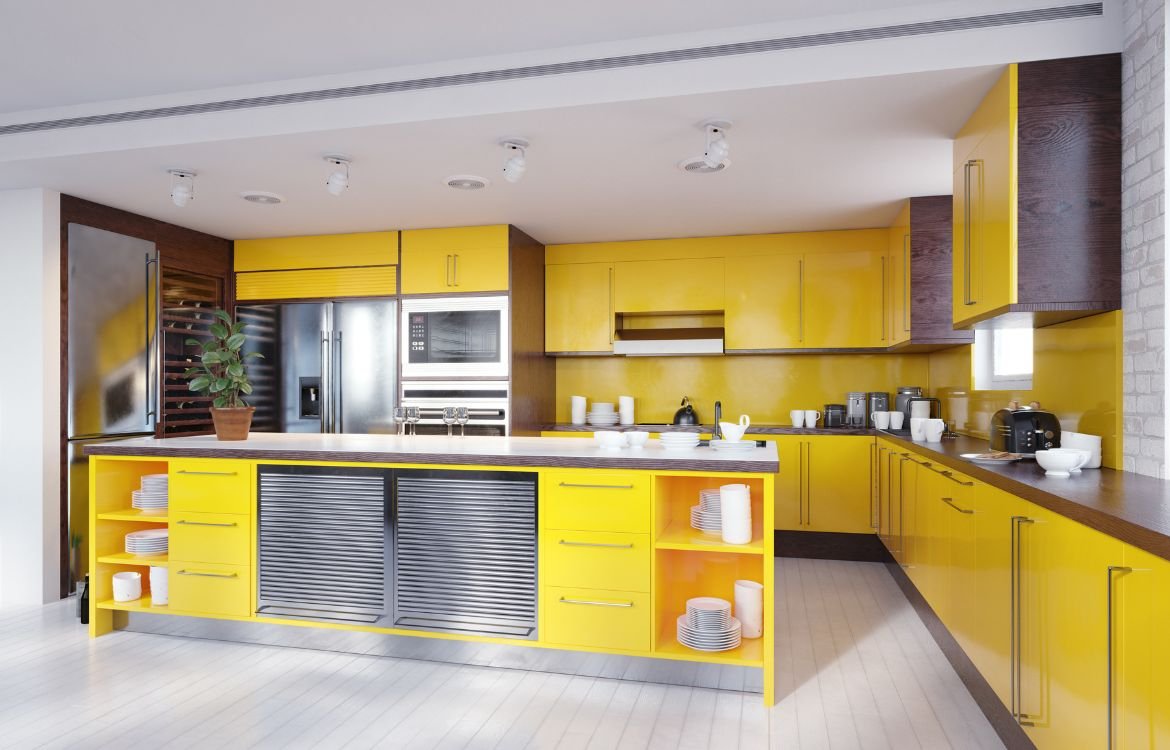Incorporating metallic and metallic-inspired colors
Welcome to the world of Metallic and Metallic-Inspired Colors, where shimmer and style converge to transform your home. If you’ve been searching for a guide on how to infuse your living spaces with a touch of elegance and sophistication, you’ve landed in the right place.
In this comprehensive article, we will explore the magic of metallic colors and provide you with expert tips, techniques, and inspiring ideas to incorporate them into your home painting projects. Get ready to embark on a journey that will elevate your paint color selection to new heights.
Introduction
The world of interior design is constantly evolving, with new trends emerging and captivating homeowners’ attention. One such trend that has gained immense popularity is the use of metallic and metallic-inspired colors. From the allure of gold to the sleekness of silver, these vibrant hues add a touch of glamour and sophistication to any living space.
Metallic colors offer a unique and captivating aesthetic that effortlessly elevates your home decor to new heights. Whether you opt for subtle accents or bold statements, incorporating metallic hues can infuse your space with a sense of luxury and opulence. Get ready to discover the endless possibilities and unleash the power of metallic colors in your home.
Benefits of incorporating metallic colors in interior and exterior painting projects
Luminosity and reflectivity:
One of the primary advantages of metallic colors is their inherent luminosity and reflectivity. The metallic particles present in these paints create a captivating sheen that adds depth and dimension to surfaces. This luminous quality can transform ordinary walls, furniture, and decorative elements into visually striking focal points, instantly elevating the overall design of a space.
Elegance and luxury:
Metallic colors have long been associated with elegance and luxury. Incorporating these colors in your interior and exterior painting projects can evoke a sense of opulence and sophistication. The shimmering and glimmering effect of metallic finishes adds a touch of glamour, making your home feel more luxurious and refined.
Visual interest and texture:
The use of metallic colors introduces a unique textural element to your home. Whether you opt for a smooth and polished metallic sheen or a more textured finish, such as hammered or patinated, metallic paints create visual interest by catching and reflecting light in different ways. The interplay between light and metallic surfaces can result in captivating patterns and variations, adding depth and intrigue to your space.
Versatility in design:
Metallic colors offer a wide range of versatility in design. They can be incorporated in various ways to suit different interior and exterior styles. From contemporary and modern spaces to classic and traditional settings, metallic colors seamlessly blend with different design aesthetics, making them a versatile choice for any homeowner.
Mood enhancement:
Color has a profound impact on our emotions and mood. Metallic colors, with their radiant and reflective qualities, can enhance the mood of a space. Warm metallic tones like gold and copper can create a cozy and inviting atmosphere, while cooler metallic shades like silver and platinum can evoke a sense of serenity and tranquility. By carefully selecting the right metallic colors, you can evoke specific emotions and set the desired ambiance in your home.
Durability and longevity:
Metallic paints often exhibit excellent durability and longevity. These paints are formulated with special binders and additives that enhance their resistance to wear, fading, and staining. When applied correctly and maintained properly, metallic finishes can withstand the test of time, ensuring that your home maintains its lustrous and captivating appeal for years to come.
Customization and personalization:
With metallic colors, you have the opportunity to customize and personalize your home to reflect your unique style and personality. Whether you prefer bold and vibrant metallic hues or subtle and muted shades, there is a wide array of options to choose from. Metallic colors can be used to create accent walls, highlight architectural details, or add a touch of glamor to furniture and decor. The ability to customize allows you to create a space that feels truly your own.

Metallic colors and their unique characteristics
To fully appreciate the beauty of metallic colors, it’s essential to understand their unique characteristics. Metallic colors are hues that exhibit a reflective, shimmering quality reminiscent of metals like gold, silver, bronze, and copper.
When it comes to selecting metallic colors for your home, you’ll find a wide range of captivating options to choose from. Each metallic color brings its own unique charm and personality to your interior and exterior spaces. From the regal elegance of gold to the sleek and contemporary allure of silver, the possibilities are endless.
Silver: Silver metallic color evokes a sleek and modern aesthetic. It has a cool tone and offers a versatile option for various design styles. Silver metallic paint creates a sophisticated and contemporary look, reflecting light to create a sense of spaciousness and airiness in a room.
Gold: Gold metallic color symbolizes opulence and luxury. It exudes warmth and richness, making it a popular choice for creating a regal and elegant ambiance. Gold metallic finishes can range from soft and subtle to bold and dazzling, adding a touch of glamour and grandeur to any space.
Bronze: Bronze metallic color carries a warm and earthy tone, reminiscent of antique treasures. It imparts a sense of history and richness to a room, creating a cozy and inviting atmosphere. Bronze metallic finishes can add depth and texture to surfaces, making them ideal for accent walls or decorative elements.
Copper: Copper metallic color offers a warm and rustic charm. It has a reddish-brown hue that brings a sense of warmth and earthiness to a space. Copper metallic finishes can lend a distinctive and unique character to interiors, particularly in rustic, industrial, or bohemian design styles.
Rose Gold: Rose gold metallic color has gained popularity in recent years, thanks to its soft and romantic appeal. It combines the warm tones of gold with a delicate hint of pink. Rose gold metallic finishes infuse a space with a touch of femininity and elegance, making them a popular choice for accent pieces, accessories, or statement walls.
Platinum: Platinum metallic color offers a cool and sophisticated look. It has a silvery-gray appearance with subtle hints of blue or purple undertones. Platinum metallic finishes can create a contemporary and upscale atmosphere, adding a touch of modernity to interiors.
Preparing for metallic painting
Before embarking on a metallic painting project, it’s important to assess the suitability of metallic colors for the different areas of your house. Consider the style and function of each space and determine whether metallic finishes align with your overall design vision. Metallic colors can work well in various areas, such as living rooms, bedrooms, kitchens, and even bathrooms. However, it’s crucial to strike a balance and ensure that the metallic elements harmonize with the overall aesthetic and purpose of each room.

Choosing the right metallic finishes and paints
Reflectivity level: Metallic paints come in various reflectivity levels, ranging from subtle shimmer to high-gloss shine. Consider the level of sheen you want to achieve and the impact it will have on the overall ambiance of the space. Keep in mind that highly reflective finishes may highlight imperfections on the surface, while more subdued metallic paints can provide a softer and more sophisticated look.
Color and shade: Metallic paints are available in a wide range of colors and shades, from classic silver and gold to more vibrant hues. Consider the existing color scheme of the room and choose metallic shades that complement or enhance the overall design. Experiment with samples or consult with a color specialist to find the perfect metallic shade for your project.
Quality and durability: Invest in high-quality metallic paints that are specifically designed for interior or exterior applications, depending on your project. Look for paints that offer good coverage, durability, and resistance to fading or tarnishing over time. Read product reviews and consult with experts to ensure you choose paints that will stand the test of time.
Preparing the surfaces for metallic painting
Proper surface preparation is crucial for achieving a flawless and long-lasting metallic finish. Follow these steps to prepare the surfaces:
Cleaning: Thoroughly clean the surfaces to remove any dirt, dust, grease, or other contaminants. Use a mild detergent solution or a suitable cleaner for the specific surface material. Rinse the surface thoroughly and allow it to dry completely before proceeding.
Sanding: If the surface has any rough patches, imperfections, or a previously glossy finish, it’s important to sand it down. Use sandpaper or a sanding block to create a smooth and even surface. Sanding helps the metallic paint adhere better and prevents any irregularities from showing through the finish. Remove any dust generated during sanding.
Priming: Applying a primer is recommended to create a smooth and uniform base for the metallic paint. Primers improve adhesion and help the metallic color appear more vibrant. Choose a primer that is suitable for the surface material and follow the manufacturer’s instructions for application and drying time.
Repairing: Inspect the surfaces for any cracks, holes, or other damage. Fill in these imperfections using an appropriate filler or spackle. Smooth out the repaired areas and sand them down to achieve a seamless surface. This step ensures that the metallic paint will adhere properly and create a smooth and flawless finish.
Metallic color combinations and schemes
Exploring harmonious metallic color combinations for various design styles
When incorporating metallic colors into your interior or exterior design, it’s important to consider harmonious color combinations that complement the overall aesthetic. Here are some popular metallic color combinations for different design styles:
Modern elegance: Combine silver and white for a sleek and sophisticated look. This combination creates a clean and contemporary feel, perfect for minimalist or modern design styles.
Warm luxe: Pair gold with rich, deep colors like burgundy, navy, or emerald green. The warmth of the gold beautifully contrasts with these jewel tones, creating an opulent and luxurious atmosphere.
Earthy tones: Bronze and copper work well with earthy color palettes. Combine them with warm browns, terracotta, or deep greens to create a rustic and natural ambiance.
Monochromatic chic: Choose a single metallic color, such as silver or gold, and pair it with various shades of the same color. This monochromatic approach adds depth and sophistication to the space while maintaining a cohesive and elegant look.
Applying monochromatic, complementary, and analogous metallic color schemes
Consider different color schemes to create visually pleasing metallic combinations:
Monochromatic scheme: Stick to a single metallic color but vary the shades and finishes. For example, combine light and dark silver or different tones of gold. This creates a harmonious and sophisticated look with subtle variations.
Complementary scheme: Pair metallic colors that are opposite each other on the color wheel. For instance, combine silver with its complementary color, like deep blue or violet. This creates a striking and visually dynamic contrast.
Analogous scheme: Choose metallic colors that are adjacent to each other on the color wheel. For example, combine gold with bronze or copper. This creates a cohesive and harmonious blend of colors that work well together.
Tips for achieving balance and visual impact with metallic color pairings
To ensure a balanced and visually impactful metallic color scheme, consider the following tips:
Dominant and accent colors: Select one metallic color as the dominant color and use other metallic colors as accents to add visual interest. This creates a focal point and prevents the space from appearing overwhelming.
Proportional distribution: Balance the distribution of metallic colors throughout the space. For example, if you have a silver accent wall, incorporate touches of silver in other elements like furniture, accessories, or lighting fixtures to create a cohesive look.
Contrast with neutral colors: Pair metallic colors with neutral hues like white, beige, or gray to create a backdrop that allows the metallic colors to shine. This contrast enhances the impact of the metallic hues and adds a sense of balance to the overall design.
Experiment with textures: Incorporate metallic colors with different textures, such as smooth finishes on walls, textured metallic wallpapers, or patterned metallic fabrics. This adds depth and visual interest to the space.

Techniques for incorporating metallic colors
Accent walls and focal points with metallic paint
One effective technique for incorporating metallic colors is to use them on accent walls or focal points within a space. Here’s how you can achieve this:
- Choose the Right Wall: Select a wall that you want to highlight or draw attention to. It could be a feature wall, fireplace wall, or any wall that serves as a focal point in the room.
- Prep the Surface: Ensure the wall is clean, smooth, and properly primed. Repair any cracks or imperfections before applying the metallic paint.
- Apply the Metallic Paint: Use a roller or brush to apply the metallic paint to the wall. Work in even, overlapping strokes to achieve a consistent finish. Follow the manufacturer’s instructions for drying time and additional coats, if necessary.
- Experiment with Techniques: Explore different application techniques to add texture and visual interest. You can use techniques like sponge painting, rag rolling, or stippling to create unique effects with the metallic paint.
- Coordinate with the Overall Color Scheme: Consider the existing color scheme in the room and choose a metallic color that complements or contrasts with the surrounding colors. This helps create a cohesive and visually appealing look.
Adding Metallic Touches through Furniture, Accessories, and Fixtures
Another way to incorporate metallic colors is to introduce them through furniture, accessories, and fixtures.
- Select Key Pieces: Choose furniture pieces, such as chairs, tables, or cabinets, with metallic finishes or accents. Look for items that have a metallic sheen or feature metallic elements like legs, handles, or trims.
- Decorate with Metallic Accessories: Incorporate metallic accents through accessories like lamps, mirrors, frames, vases, or decorative objects. Opt for metallic finishes in gold, silver, bronze, or copper to complement the overall design.
- Consider Metallic Lighting Fixtures: Install light fixtures with metallic finishes, such as pendant lights, chandeliers, or sconces. These fixtures not only provide functional lighting but also add a touch of glamour and elegance to the space.
- Mix Metals: Don’t be afraid to mix different metallic finishes within the same room. Combining gold, silver, and bronze accents can create an eclectic and visually appealing look. Just ensure that the metals coordinate with each other and the overall design aesthetic.
Creating Depth and Texture with Metallic Finishes and Faux Painting Techniques
To add depth and texture to your walls or surfaces, consider using metallic finishes and faux painting techniques. Here’s how you can achieve this effect:
- Choose the Right Finish: Select a metallic finish that suits your desired aesthetic. Options include brushed metallic, hammered metallic, or metallic glaze. Each finish offers a different level of shine and texture.
- Prepare the Surface: Clean and prepare the surface, ensuring it is smooth and free from imperfections. Apply a base coat in a complementary color if necessary.
- Apply the Metallic Finish: Use a brush, roller, or specialized tools to apply the metallic finish. Follow the specific instructions provided by the manufacturer for the chosen product.
- Experiment with Faux Painting Techniques: Explore faux painting techniques like color washing, sponging, or strié to create unique textures and patterns with the metallic finish. These techniques add depth and dimension to the surface.
- Consider Accentuating Architectural Details: Use metallic finishes to highlight architectural details such as moldings, trim, or ornamental elements. This draws attention to these features and adds visual interest to the space.
Applying Metallic Colors in Different Areas of the House
- Metallic Accent Walls: Choose a metallic paint color for an accent wall to serve as a focal point. This adds depth and visual interest to the living room.
- Metallic Furniture: Opt for furniture pieces with metallic finishes, such as coffee tables, side tables, or shelving units. These elements add a touch of glamour and sophistication to the space.
- Metallic Accessories: Decorate with metallic accessories, such as metallic throw pillows, curtains with metallic sheen, or metallic artwork. These small touches can elevate the overall aesthetic.
- Metallic Cabinets: Choose metallic finishes for kitchen cabinets to make a bold statement. Options like stainless steel, brushed nickel, or copper can give your kitchen a contemporary and sleek appearance.
- Metallic Backsplashes: Install a metallic backsplash to add visual interest and a reflective surface. Stainless steel or metallic mosaic tiles can provide a striking focal point.
- Metallic Hardware: Swap out traditional hardware with metallic options for your cabinets and drawers. Brass, bronze, or chrome handles and knobs can give a fresh and updated look to the kitchen or dining area.
- Metallic Wallpaper: Choose metallic wallpaper to create a luxurious and shimmering backdrop in the bedroom or bathroom. This adds texture and elegance to the space.
- Metallic Beddings and Curtains: Select beddings and curtains with metallic accents or finishes to add a touch of glamour to the bedroom. Soft metallic hues can create a serene and calming ambiance.
- Metallic Bathroom Fixtures: Incorporate metallic finishes in bathroom fixtures such as faucets, showerheads, or towel bars. Polished chrome or brushed nickel options can lend a modern and sophisticated feel to the bathroom.
Exterior Applications of Metallic Colors
- Metallic Front Door: Paint your front door with a metallic color like bronze, copper, or silver. This creates a striking focal point and adds a touch of sophistication to your home’s exterior.
- Metallic Trim and Accents: Use metallic colors for trim details, such as window frames, shutters, or railings. This adds visual interest and highlights architectural features.
- Metallic Garage Doors: Consider painting your garage doors with metallic finishes for a modern and sleek look. This can elevate the overall aesthetic of your home’s exterior.
- Metallic House Numbers: Replace standard house numbers with metallic ones. Choose finishes like brass, stainless steel, or brushed nickel for a polished and modern touch.
- Metallic Light Fixtures: Install metallic light fixtures on the exterior of your home, such as sconces or pendant lights. This adds a touch of elegance and enhances nighttime curb appeal.
- Metallic Mailbox: Upgrade your mailbox with a metallic finish or choose a mailbox made of metal. This small detail can make a big impact and tie in with other metallic accents.
- Metallic Outdoor Furniture: Choose outdoor furniture pieces with metallic frames or finishes. Materials like aluminum, wrought iron, or powder-coated steel can withstand outdoor conditions while providing a sleek and modern look.
- Metallic Planters and Pots: Select metallic planters or pots to showcase your plants and flowers. Copper, bronze, or silver finishes can add a touch of elegance and create visual interest in your outdoor spaces.
- Metallic Garden Art and Accents: Incorporate metallic sculptures, wind chimes, or outdoor wall art to add a unique and artistic touch to your garden or patio area. These decorative elements can complement the overall metallic theme of your exterior.
Care and Maintenance of Metallic Finishes
- To keep metallic finishes looking their best, follow these cleaning and maintenance tips:
- Gentle Cleaning: Use a soft, lint-free cloth or a microfiber cloth to gently dust the surface of metallic-painted areas. Avoid using abrasive materials or harsh chemicals that can damage the finish.
- Mild Soap Solution: For more thorough cleaning, mix a mild soap solution with warm water. Dampen a soft cloth in the solution and gently wipe down the metallic surface. Rinse with clean water and dry thoroughly.
- Avoid Scratching: To prevent scratching the metallic finish, avoid using abrasive scrub brushes or rough cleaning pads. Instead, opt for soft cloths or sponges.
- Protective Coatings: Consider applying a clear protective coating or sealant specifically designed for metallic finishes. This can help preserve the shine and protect the surface from wear and tear.
- Use Coasters and Mats: Place coasters under glasses and mats under objects to prevent scratches or stains on metallic-painted surfaces. This is particularly important for tabletops, countertops, and other frequently used areas.
- Minimize Sun Exposure: Prolonged exposure to direct sunlight can cause metallic finishes to fade or discolor over time. Consider using window treatments or UV-protective films to minimize sun exposure on metallic-painted surfaces.
- Handle with Care: When moving furniture or objects with metallic finishes, use caution to avoid bumping or scraping the surface against walls or other hard surfaces. Lift objects instead of dragging them to prevent scratching.
- Regular Inspections: Periodically inspect metallic-painted surfaces for signs of damage, such as scratches, chipping, or peeling. Address any issues promptly to prevent further deterioration.
How to touch up metallic finish
Matching the Original Color: When touching up or repainting metallic finishes, ensure that the new paint matches the original color and sheen. Test the color in an inconspicuous area before proceeding.
Surface Preparation: Properly prepare the surface by cleaning, sanding (if necessary), and removing any loose or chipped paint. Follow the manufacturer’s instructions for priming and applying the metallic paint.
Feathering Technique: When blending the new paint with the existing metallic finish, use a feathering technique to create a seamless transition. This helps avoid noticeable differences in sheen or texture.
Multiple Coats: Depending on the desired effect and the condition of the existing metallic finish, applying multiple thin coats of metallic paint may be necessary for optimal coverage and uniformity.
FAQ
What is the metallic color theory?
Is it OK to mix silver and gold decor?
What colors are considered metallic?
How do you paint metal with metallic paint?
- Prepare the surface by cleaning it and removing any rust, dirt, or old paint.
- Apply a metal primer to enhance adhesion and protect the metal.
- Stir the metallic paint thoroughly to ensure an even distribution of metallic particles.
- Use a brush or roller to apply the metallic paint evenly, following the manufacturer’s instructions for drying times and application techniques.
- Apply multiple coats as needed to achieve the desired depth and intensity of the metallic finish.
- Allow the paint to dry completely before handling or applying additional coats.
What metallic colors look good together?
How do you color something to look metallic?
Can you mix metal colors when decorating?
Does GREY and gold decor go together?
What is it called when you mix two metals together?
What is the forbidden colors theory?
What are the 7 color schemes?
- Monochromatic: Utilizes variations of a single color for a harmonious and cohesive look.
- Analogous: Uses colors that are adjacent to each other on the color wheel, creating a sense of unity.
- Complementary: Combines colors that are opposite each other on the color wheel, creating a high contrast and vibrant effect.
- Split Complementary: Involves a base color and two colors adjacent to its complementary color, offering a balanced yet dynamic scheme.
- Triadic: Utilizes three colors evenly spaced around the color wheel for a visually striking and balanced composition.
- Tetradic: Involves two sets of complementary colors, creating a rich and vibrant palette.
- Accented Analogous: Combines analogous colors with an additional accent color for added visual interest.
What are the 3 true primary colors?
Conclusion
Thank you for joining us on this exploration of Incorporating Metallic and Metallic-Inspired Colors. We hope this article has provided you with valuable insights, inspiration, and practical tips to transform your home.
Remember, at Horizon Painting, we are always here to help you bring your vision to life. Whether you’re looking to add a touch of shimmer to your living room or create a luxurious ambiance in your bedroom, our team of experts is ready to assist you.
Contact us today and let us make your dream home a reality.
